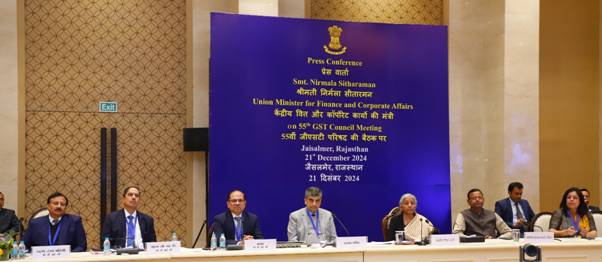TDS on Property is most Important Concept if you sale or purchase any property
Section 194IA talks about Payment on transfer of certain immovable property (other than Agricultural land) to deduct TDS in case of Property value is more than Rs.50 Lakh @1% and Buyer is liable to deduct TDS
But above provisions do not apply if you purchase property from NRI (Non Resident Indian)
When a property is purchased from a Non-Resident Indian (NRI) in India, the buyer is required to deduct Tax Deducted at Source (TDS) on the sale consideration before making the payment to the NRI seller. The provisions for TDS on property purchased from NRI are covered under Section 195 of the Income Tax Act, 1961.
Important Points:
- TAN is mandatory in this case: if buyer do not have TAN, Then he have to apply for the same.
- TDS on purchase of Property from NRI is required to be deducted irrespective of the Transaction Value of the Property. Even if the value of property is less than Rs. 50 Lakhs TDS is required to be deducted.
- TDS is required to be deducted whenever any payment is made to the NRI for purchase of property. Even if any advance is being paid for purchase of property, TDS is required to be deducted.
- The residential status of the buyer would not be considered and only the residential status of the seller would be considered for computing the amount of TDS to be deducted
- NRI can apply for lower Deduction certificate from income tax department
- Buyer is required to deposit TDS within 7 days from the end of month in which TDS is deducted, and file TDS return form 27Q
- In case of late payment of TDS interest would be levied 1/1.5% per month
- NRI may apply for PAN
- If amount to be transfer in Bank account in foreign country form 15 CA 15 CB required
- Seller can avail exemption on LTCG u/s 54
- File mandatory income tax return
Rates of TDS on property purchased from NRI:
| Nature of Capital Gain | Description | TDS Rate |
| Long Term Capital Gain | Property held for more than 2 years | 20% |
| Short Term Capital Gain | Property held for less than 2 years | Income Tax Slab Rates of Seller |
the effective TDS rate on the property sale via NRI towards the long term capital gains is mentioned as:
| Particular | Property Sale Price (Rs.) | |||
|---|---|---|---|---|
| Less than 50 Lakhs | 50 Lakhs to 1 Crores | 1 Crore to 2 Crores | ||
| Long Term Capital Gains Tax | 20% | 20% | 20% | |
| (Add) | Surcharge | Nil | 10% of above | 15% of above |
| Total Tax (incl Surcharge) | 20% | 22% | 23% | |
| (Add) | Health & Ed. Cess | 4% of Above | 4% of Above | 4% of Above |
| Applicable TDS Rate (incl. Surcharge & Cess) | 20.8% | 22.88% | 23.92% | |
How to pay TDS:
Process to pay TDS and TCS is changed and below video will help you to pay TDS/TCS online with the new method
TAN and Form 27Q:
The buyer is required to have a Tax Deduction and Collection Account Number (TAN) and deduct TDS using Form 27Q. Form 27Q is the TDS return that needs to be filed with the Income Tax Department for TDS on payments to NRIs.
TDS Payment and Filing of Form 27Q:
The TDS deducted on the property purchase should be paid to the government by the buyer within the specified due dates. Form 27Q should be filed quarterly with the tax authorities, providing details of TDS deductions made.
PAN and Form 15CA/15CB:
The NRI seller is required to provide their Permanent Account Number (PAN) to the buyer. Additionally, Form 15CA and Form 15CB are required to be submitted by the NRI seller for remittance of sale proceeds outside India (In case he want to get money in his bank account situated outside India). These forms ensure compliance with Foreign Exchange Management Act (FEMA) regulations.
How to Easily Find Out the Seller is Resident or Non-Resident?
Finding out the residential status of the seller is an essential thing to execute during performing the property transaction with NRI as the TDS rate to be deducted relied on whether the seller is a resident or NRI in India for income tax purposes.
The same depends on the number of days an individual spends in India which shall be revealed if the seller is resident in India or a non-resident Indian.
By using a residential status calculator made by the Income Tax Department the residential status of the seller would be determined which would be accessed from here: https://www.incometaxindia.gov.in/Pages/tools/residential-status-calculator.aspx
Important points
- Countries citizenship does not matter during finding out if the seller is a resident or non-resident in India. Despite when an individual is a citizen of India however lives in a foreign country he will be recognized as a non-resident for income tax purposes. The income tax act does not discuss citizenship it only reveals the number of days spent in India.
- Despite if the seller owns an Indian Aadhaar card and PAN card he would still recognize as a non-resident in India.
- The number of days spent in India reveals the residential status of the person and it does not reveal on the grounds of the Aadhaar Card or PAN Card. The type of bank account of the seller does not have any influence on the residential status of the seller. It is due to the person does not convert his resident savings account to NRI bank accounts he would still acknowledge as a non-resident.
Form 13
To get benefit to not to deduct TDS on a property sale by NRI he is needed to furnish the application in Form 13 within the income tax department to provide the certificate for Nil/ Lower Deduction of TDS.
But furnishing the form is a tough chore as it required lots of documents as proof and thus the majority of NRIs opt for the chartered accountant to furnish the application.
Be Careful Seller:
- Attempt to obtain Form 13 (the certificate from the income tax department to calculate the capital gains that would reduce the TDS to be deducted)
- Various documents such as Purchase Price, Date of Purchase, any expenses on Renovation/ Construction, and others are needed to be submitted including with Form 13. The income tax officer would review these documents and if he accepted then he would provide a certificate for the lesser TDS deduction.
- When the seller would not able to get the certificate then the TDS shall be deducted on the sale value and would be rendered towards the surplus deduction of TDS.
- With Property Registration Documents, the seller must collect Form 16A from the Buyer.
- The seller would lower down his capital gains that pointed towards the lower TDS and the tax liability if the seller has an intention to reinvest in the capital gains in India.
- If the seller does not choose this certificate then he would apply towards the refund of the surplus TDS deducted during the finish of the year.
- If there are two sellers that are co-owners then both of them shall be needed to furnish Form 13 respectively to diminish the TDS cost.
- The compliance of the lower TDS certificate (Form 16) is applicable for both NRI and OCI cardholders and the advantage would also be enjoyed by the OCI cardholders.
More important points to keep in mind
When the buyer buys the property he has various responsibilities if he buys it from NRI. the buyer must have:
- Deduct the TDS during the time of every payment and not during the Registration of Property.
- TDS that gets deducted would get deposited with the income tax department within time
- TDS return (27Q) would be filed with the income tax department as per due date
- The purchaser would provide Form 16A to the seller post to furnishing the TDS return. Form 16A undergoes a TDS certificate that mentions that the buyer has deposited TDS with the seller.
- Towards the concern that if the late TDS payment is furnished then the interest levied will be 1%/1.5% per month.
- Towards the case when the late filing of TDS return is furnished Rs 200 penalty would be imposed. The income tax officer imposes a penalty of up to Rs 1 lakh.
- Towards the concern of a Home loan, the TDS is to be deducted when the payment is furnished to the seller excluding when EMI gets furnished to the bank.
- TDS gets deducted under the mentioned above schedule on the advance payment. TDS under the mentioned schedule is subjected to apply on all the payments furnished prior to providing the lesser TDS certificate.











